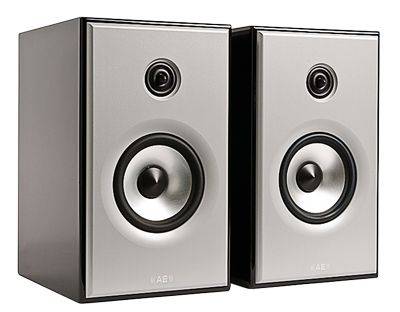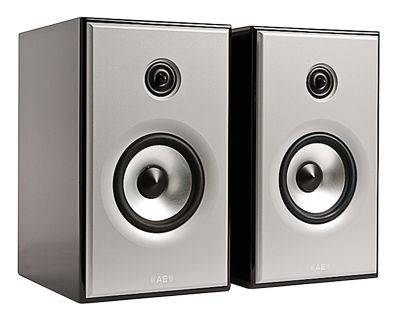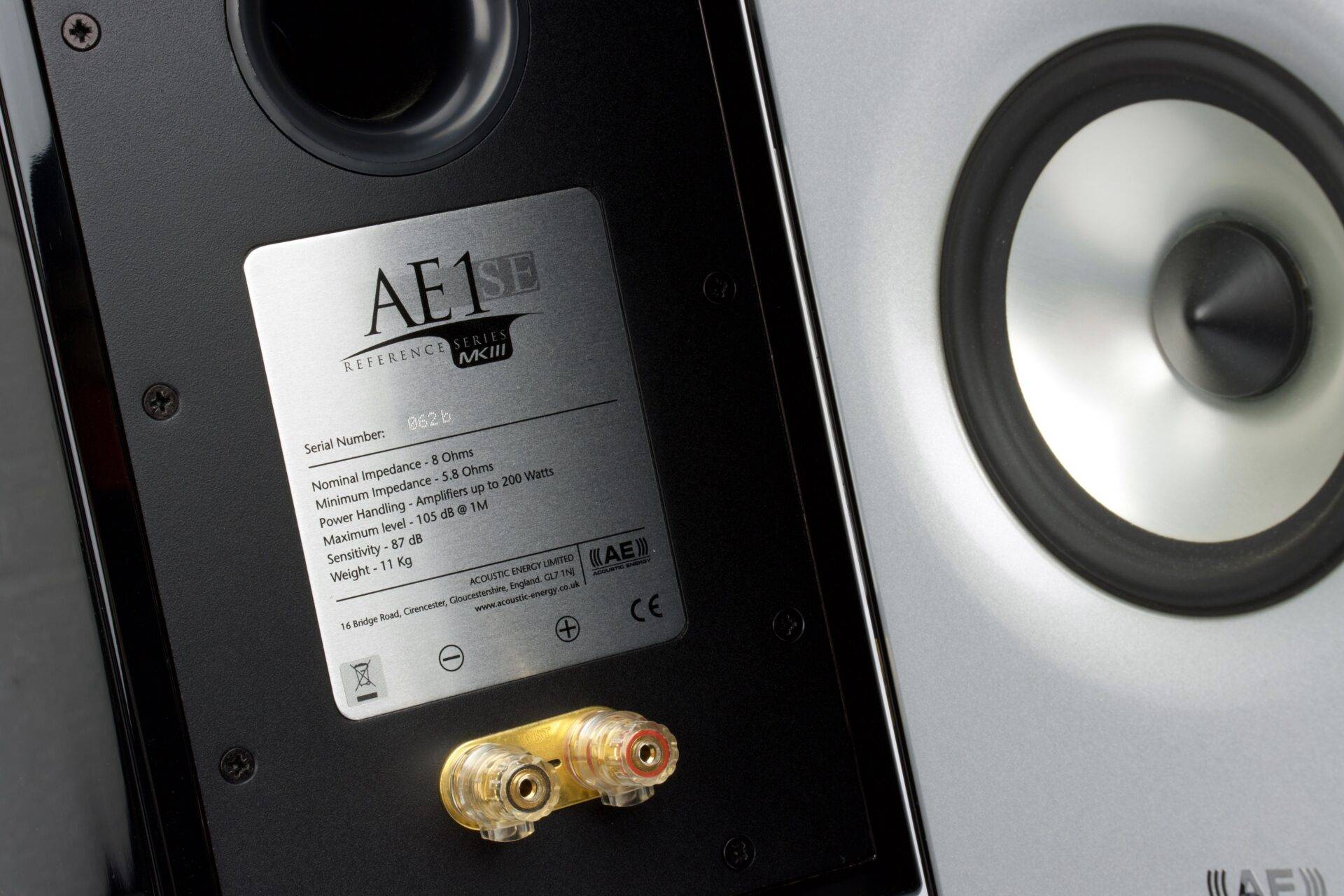Acoustic Energy AE1 Reference Mk3 with stands
Original price was: R67,500.00.R28,000.00Current price is: R28,000.00.
 |
|||||||||||||
| It was 16 years ago but I actually remember it well. In the September/1988 issue of Stereophile magazine, John Atkinson published what may have been the first ever review of the Acoustic Energy AE1 loudspeaker. It was enthusiastic. Atkinson thought that the groundbreaking AE1 was one of the most transparent cone loudspeakers he had heard up until that time and he went on to discuss its outstanding abilities in the area of soundstaging (no surprise) and their ability to play loudly without strain (somewhat of a surprise) in rooms where larger speakers would be impossible to place. He granted that the AE1 did concede bass extension to those larger speakers but offered a heart-felt recommendation to those who valued midrange transparency. And who doesn’t value midrange transparency? | |||||||||||||
It’s sixteen years later and the AE1 is still in production, albeit in its 3rd incarnation. I have to say that I’ve always liked the AE1’s aesthetics (particularly in the old Santos Rosewood!) but today it’s slicker than ever. My review pair came finished in a flawless piano black and the speaker incorporates a fascia constructed of a polished 10mm-thick aluminum billet (that’s almost a half-inch thick) that looks great and is claimed to serve several functions. First, it offers an acoustically inert platform from which to launch the waveform. Second, it acts as a heat sink wicking away damaging thermal energy from the mounted drivers.The first of those drivers is a 1.26-inch “Ring-Dome Radiator” tweeter featuring a neodymium magnet. This “custom-built and Acoustic Energy designed” doped fabric diaphragm tweeter features a metal chassis, which is said to be directly interfaced with the aforementioned alloy baffle for low vibration. |
 |
||||||||||||
| The second is the Acoustic Energy-built custom 4-inch alloy cone mid-woofer that features ceramic coating and a die-cast magnesium chassis, said to be the first low frequency driver to incorporate a neodymium magnet system.
There are smaller speakers around but good luck trying to find a 12″ tall by 7.5″ wide by 10″ deep speaker with a -2.5dB point of 55Hz and useable bass (- 6dB) all the way down to 38Hz. Of course, the trade-off between size and bass extension is usually efficiency and sometimes there’s just no bucking the laws of Physics. With an 8-ohm rating and a sensitivity of 87dB, Acoustic Energy suggests amplifiers of up to 200 watts but doesn’t mention a minimum rating. On paper, the AE1 Reference 3 doesn’t look all that difficult to drive. For now, I’ll just say that skimping on amplifier power would be a mistake. More on this later. Acoustic Energy is proud of the 24-pound speaker enclosure. The reflex port is newly located at the rear to eliminate audible turbulence. The MDF cabinet’s internal walls are lined with anti-resonant steel plating with strategically placed tensioned steel cross braces said to reduce cabinet distortion to the vanishing point. The rear baffle is adorned with a single pair of premium fully insulated WBT binding posts which are spaced too widely for use with dual banana plugs but accommodate wire, spades and single bananas. |
|||||||||||||
 |
|||||||||||||
| Lastly (whew!) the crossover is said to be a 3rd order acoustic, phase corrected with drivers wired in phase electrically. Crossover elements number 14 and they are said to be close tolerance components (+/- 2% typical).
Anyway, settling on placement for the AE1 Reference 3s was exactly as it would be with any large relatively full-range speaker. Forget the part about placing the monitors where they image best and then placing a necessary subwoofer for real bass. The AE1s are so extended and full in the mid and upper bass that they require real care in orientation. |
|||||||||||||
 |
|||||||||||||
| It was never that I found the bass lacking in depth or weight but it took care to get the quality of bass to where I suspected it could be. As I say, this is as it is with most any large speaker. If you have occasion to try these in your home, don’t give up and settle for soft indistinct bass when with a little perseverance, you can turn that indistinct purr into a turn-your-belly-to-jelly growl. And no, I’m not kidding. Eventually I settled with the tweeters 26 inches from the rear wall. In the context of large speakers, that may not sound like much, but these are relatively tiny speakers. And when you consider the compromises involved with a tiny speaker and a 4-inch woofer, obviously their raison d’être is full-bodied sound from an inconspicuous size; a speaker that produces imposing sound with unimposing aesthetics. And that these speakers do in spades. |
|||||||||||||
Description
Acoustic Energy is proud of the 24-pound speaker enclosure. The reflex port is newly located at the rear to eliminate audible turbulence. The MDF cabinet’s internal walls are lined with anti-resonant steel plating with strategically placed tensioned steel cross braces said to reduce cabinet distortion to the vanishing point.
1.26-inch “Ring-Dome Radiator” tweeter featuring a neodymium magnet. This “custom-built and Acoustic Energy designed” doped fabric diaphragm tweeter features a metal chassis, which is said to be directly interfaced with the aforementioned alloy baffle for low vibration.
Fascia constructed of a polished 10mm-thick aluminum billet (that’s almost a half-inch thick) that looks great and is claimed to serve several functions. First, it offers an acoustically inert platform from which to launch the waveform. Second, it acts as a heat sink wicking away damaging thermal energy from the mounted drivers. Extremely smooth and detailed with a robust and fast sounding bass.
Seldom seen for sale, in absolutely mint condition and has been unused / storage for well over 8 years approximately. There is a soft dimple (NO DAMAGE and Does not effect its performance) since it was there when I purchased it around 9 years ago. Simply trying to be as transparent and clear as possible.
The speakers is one of the best monitors out there. Stunning reviews globally and has a sonic “elecrtrostatic” type of resolution as reviewers agree upon.
Retailed for US$3500 to US$4000 pending finish
Description: Two-way, reflex-loaded, stand-mounted loudspeaker. Drive-units: 1.5″ (38mm) ring-radiator tweeter, 4.5″ (110mm) aluminum-cone woofer. Crossover: 2kHz, second-order. Frequency response: 45Hz–40kHz, ±3dB. Sensitivity: 87dB/2.83V/m. Impedance: 8 ohms nominal, 5.8 ohms minimum. THD: <0.3%, 200Hz–20kHz (no level specified). Power handling: 200W. Maximum SPL: 105dB at 1m.
Dimensions: 12.2″ (310mm) H by 7.3″ (185mm) W by 9.8″ (250mm) D. Weight: 24.2 lbs (11kg) each.







